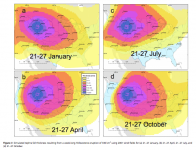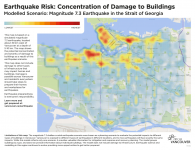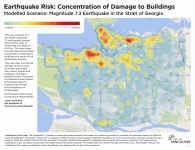ArmyRick
Army.ca Veteran
- Reaction score
- 2,349
- Points
- 1,010
So some of my favorite hobby past times is learning about super or mega natural disasters. Its very humbling. And incredible what mother nature can do when she lays a smack down on man kind.
I am talking things like volcanoes, hurricanes, earthquakes, tsunami, etc. They impact society. Or many societies. And would most certainly affect military and emergency services.
So for fun, tell us a fictional story. What MEGA (not your everyday) disaster kicks the living hell out of Canada and/or the world. What sets up our man kind threatened disaster? and what happens next?
I'll go first. Apparently, Yellowstone (the park, not the awesome ranch) is on top of a very active but passive volcano that someday will erupt in a super volcano. So lets say its 2023 and that puppy finally lights up. Bad. Destroying pretty much the entire states of Wyoming and Montana. In Canada, southern Alberta, Saskatchewan and British Columbia are blanketed in thick ash clouds within days.
Crops are destroyed, planes are grounded, people are ordered to stay home. Emergency services are overwhelmed and the CAF is deployed but barely puts a dent in the disaster's effects. Livestock are dying, oil fields are eventually shutdown and even land transportation is almost completely stopped.
Several weeks later, the globe is covered in an ash sulfur cloud. The earth physically cools. Winter for us in Canada comes in 2-3 months early. Starvation skyrockets, hospitals are forced to brutally triage (turn away terminally ill and near death patients). Police and soldiers are stretched to their limits controlling exploitative actions such as looting.
From what I have read the eruptions of Tambora and Krakatoa in the 1800s affected the global weather patterns for 2 plus years. So in this case, I will assume its a full decade before the weather returns to somewhat normal and end result sees the world population reduced by 75%. How would politicians react? Who knows. Maybe Trudeau will be still be thankful for his carbon taxes.
How does your fictional story play out?
I am talking things like volcanoes, hurricanes, earthquakes, tsunami, etc. They impact society. Or many societies. And would most certainly affect military and emergency services.
So for fun, tell us a fictional story. What MEGA (not your everyday) disaster kicks the living hell out of Canada and/or the world. What sets up our man kind threatened disaster? and what happens next?
I'll go first. Apparently, Yellowstone (the park, not the awesome ranch) is on top of a very active but passive volcano that someday will erupt in a super volcano. So lets say its 2023 and that puppy finally lights up. Bad. Destroying pretty much the entire states of Wyoming and Montana. In Canada, southern Alberta, Saskatchewan and British Columbia are blanketed in thick ash clouds within days.
Crops are destroyed, planes are grounded, people are ordered to stay home. Emergency services are overwhelmed and the CAF is deployed but barely puts a dent in the disaster's effects. Livestock are dying, oil fields are eventually shutdown and even land transportation is almost completely stopped.
Several weeks later, the globe is covered in an ash sulfur cloud. The earth physically cools. Winter for us in Canada comes in 2-3 months early. Starvation skyrockets, hospitals are forced to brutally triage (turn away terminally ill and near death patients). Police and soldiers are stretched to their limits controlling exploitative actions such as looting.
From what I have read the eruptions of Tambora and Krakatoa in the 1800s affected the global weather patterns for 2 plus years. So in this case, I will assume its a full decade before the weather returns to somewhat normal and end result sees the world population reduced by 75%. How would politicians react? Who knows. Maybe Trudeau will be still be thankful for his carbon taxes.
How does your fictional story play out?









